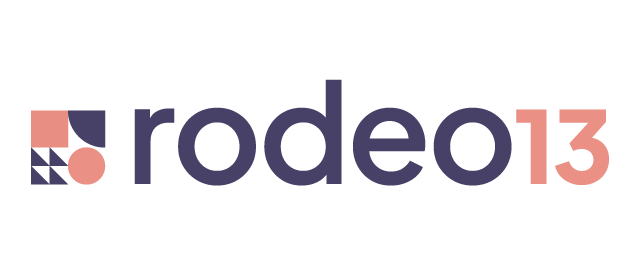There’s lots of noise out there today. Markets are saturated and standing out is as difficult as singing a song without lyrics. Most brands sound and look similar and aren’t very successful at distinguishing themselves from their competitors. Singing the song of your brand requires something to sing about. Cue: your unique value proposition, also known as UVP.
UVP, explained
Your unique value proposition should focus on the outcomes that result from using your service/product. For example, Rodeo13’s UVP is:
“Pull strategy, visuals, and delivery together to transform your brand into a story that sells.”
Rodeo13 is a branding and marketing creative shop, but we never mention that in our UVP - instead, we focus on the outcome for our audience: a brand transformation that will help them grow and increase their revenue.
Some other great example UVPs from insights brands:
Insight Platforms: "Find companies, events and training courses for research & analytics."
incling: "Engage with diverse audiences, and generate quick turnaround results in a cost-effective and collaborative way."
Hello Ara: "Use Conversational AI to understand people better and activate change."
The best UVPs are clear, concise, and relatively short. They focus on benefits and outcomes. Your UVP is the single most important building block of your brand. It’s what effectively communicates to your audience how what offer will benefit them. It’s how people will remember you.
Finding and refining your UVP
If you want to define (or redefine) your UVP, start with a sentence on what you do. Now, write a list of the consequences of people using your product/service. Then, finish with another sentence on how your solution is different and what makes it unique. Use action verbs but avoid stock phrases and too much jargon.
For example:
1. Rodeo13 works with insights brands to build a comprehensive growth solution forging marketing strategy with visuals and delivery.
2. Brand transformation, increased revenue, growth, more sales
3. We tell brand stories and use a holistic approach to marketing.
We then recommend using some of our formulas to build your UVP:
- Do/use [3] to [2]
- [2] and [1]
- [2] to [3] for [2]
- [1] to [2] and/to/so that [3]
Using the above Rodeo13 example, some options these formulas would yield would be:
- "Use brand storytelling to transform your brand." (repetitive)
- "Transform your brand and build a comprehensive growth solution" (too generic)
- "Forge marketing strategy with visuals and delivery to increase your revenue and tell your brand story" (too wordy and not concise)
- "Forge strategy, visuals and delivery to transform your brand into a story."
After some further wordsmithing, this last option was our winner.
To really hit the nail on its head with your UVP, it’s also crucial to understand the needs, wants, and pain points of your target audience. We recommend a qualitative approach like in-depth interviews to get in deep with your potential buyers and identify the problems and challenges that they face and the solutions they are looking for. Use the results to create buyer personas and center all of your communications around them.
Your UVP is not to be created once and forgotten. It will need some light maintenance work as the years pass. Stay sensitive to customer feedback and industry trends to evolve your UVP, hand in hand with your brand and the ever-changing needs and challenges of your audience.
The Next Step: Craft Your Messaging
Once you have your UVP, the next step is to make sure it’s communicated to your audience in the right way and through the right channels. This will largely depend on the results of the persona research you used to create your value proposition. Here are some recommendations in general terms and in no order of importance:
- make sure your messaging (both written and visual) is consistent across all channels, from your website to social media to email campaigns and even project deliverables
- use storytelling to communicate your UVP in a memorable way
- use the language (and jargon!) your audience uses
- talk to your audience on their preferred channels
- create a synergy between employee personal brands and the company brand
Remember to constantly evaluate and refine your UVP and messaging as your brand and audience evolve. Stay current with industry trends and customer feedback to create a memorable and impactful brand that stands out in a crowded market.
